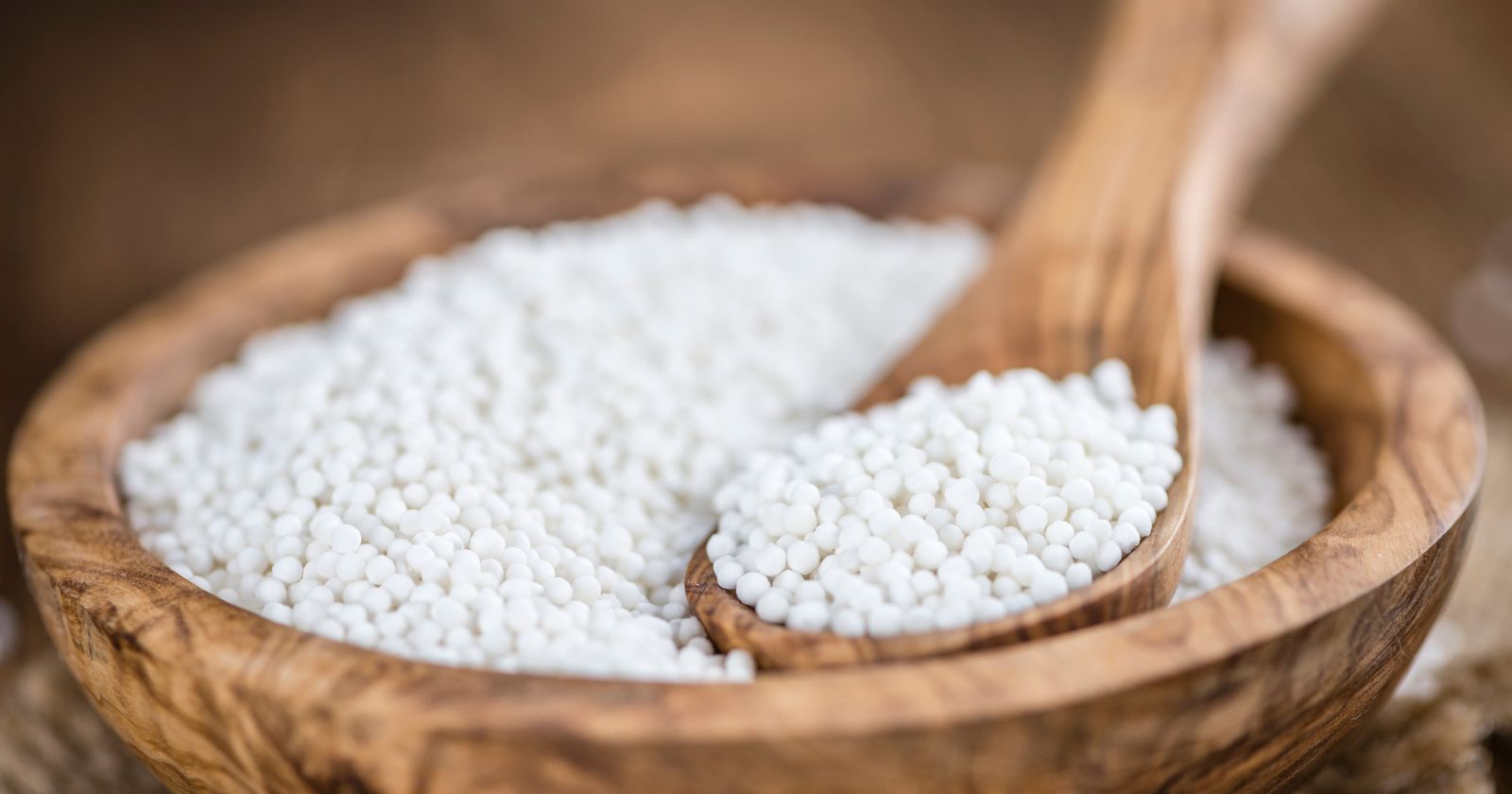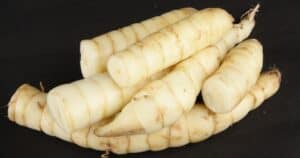Looking for a versatile and nutritious ingredient to add to your diet? Look no further than tapioca!
If you’re tired of the same old carb sources, tapioca is a great alternative that can add flavor and texture to various dishes. Plus, tapioca fits the bill if you’re looking for gluten-free or grain-free options.
Tapioca is a starch extracted from the cassava root, a plant native to South America. It’s a popular ingredient in many cuisines worldwide and is often used in baking, cooking, and as a thickening agent. Tapioca is a great energy source, as it’s high in carbohydrates but also low in fat and protein, making it a good option for those looking to manage their macronutrient intake.
In this article, we’ll explore the many uses of tapioca, from its traditional services in puddings and bubble tea to its more innovative uses in gluten-free baking and cooking.
We’ll also take a closer look at the nutritional benefits of tapioca, including its high carbohydrate content, as well as its low fat and protein content.
Whether you’re a seasoned chef or a home cook looking to experiment with new ingredients, tapioca is a versatile and nutritious option you won’t want to overlook.
What Is Tapioca And Where Does It Come From?

Tapioca is one of the many amazing starches available to us. It is a South American starch, derived from the root of the cassava plant, which is widely grown and consumed in Latin America, Africa and parts of Asia.
Tapioca comes in various forms like flour, meal, flakes or granules. Its primary components are starch and water, but it also has lots of vital nutrients like iron and an array of vitamin Bcomplex.
Tapioca is low-calorie but high nutrient density punch. It is a good source for amino acids, essential for digestion and immune system health.
Tapioca can be used as a swap for people with special dietary needs such as gluten or dairy intolerance due its hypoallergenic properties. It can also be enjoyed like other classic starches by adding it to dishes from pies to pudding.
You can even use it when making vegan dishes or snacks to thicken sauces or replace milk altogether!
Tapioca has become increasingly popular in the culinary world due to its versatility and nutrition profile. With so many forms and uses, there’s something for every type of home cook!
Tapioca Starch Vs. Tapioca Pearls: What’s The Difference?
Tapioca is a carbohydrate derived from the cassava root, which is also known as yuca or manioc. Many forms of tapioca exist, with tapioca flour and cass tapioca being the more popular variations.
However, the use of tapioca pearls has become much more widespread; these pearls can be sweetened or flavored for different dishes and are most commonly used in bubble tea beverages.
Tapioca Starch
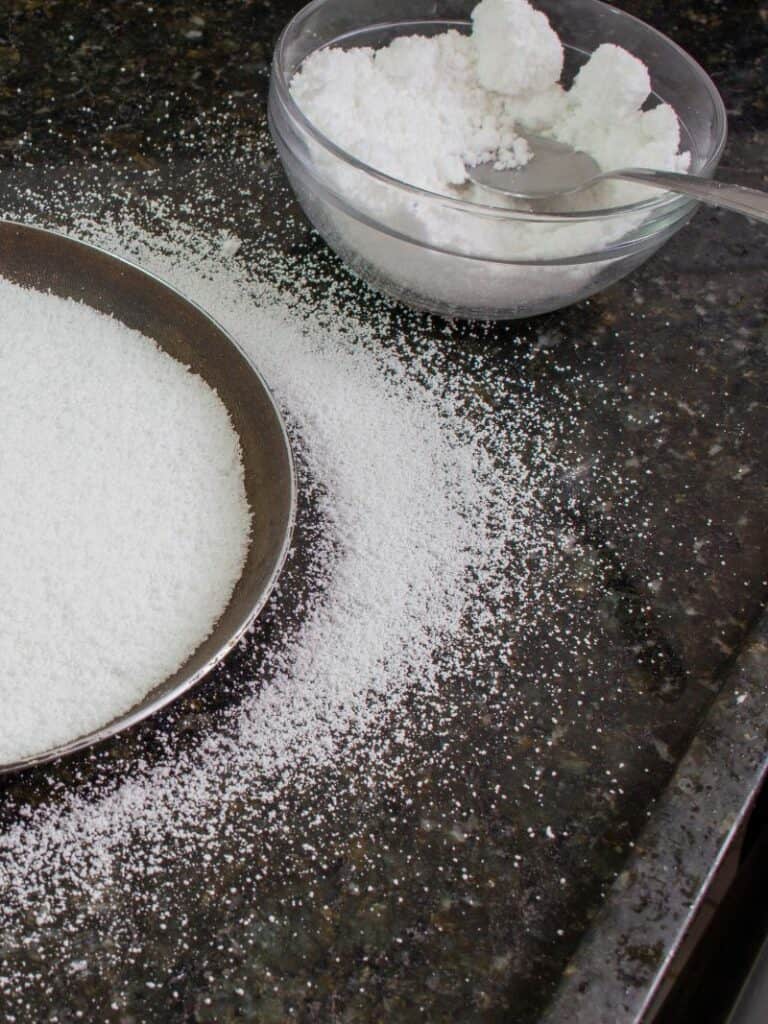
Tapioca starch is a fine, white powder made from the cassava root. It’s used as a thickener in a variety of dishes, from soups and stews to sauces and gravies.
Tapioca starch has a neutral flavor and can be used as a substitute for cornstarch or flour in recipes. It’s also a popular ingredient in gluten-free baking, as it can provide structure and texture to baked goods.
Tapioca Pearls
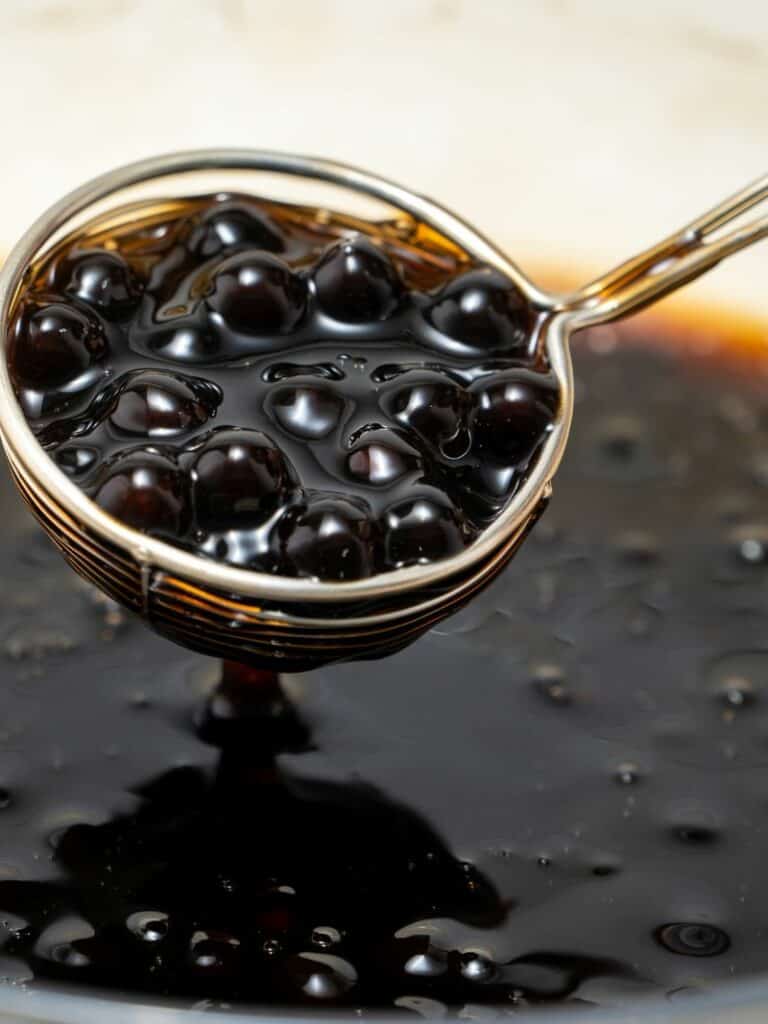
Tapioca pearls, on the other hand, are small, round balls made from tapioca starch. They’re often used in desserts and drinks, such as tapioca pudding and bubble tea. Tapioca pearls have a chewy, gummy texture that’s unique and enjoyable to eat.
They come in different sizes, from small pearls to larger ones, and can be colored or flavored for added visual appeal.
Here are the key differences between tapioca starch and tapioca pearls:
- Tapioca starch is a fine, white powder made from the cassava root, while tapioca pearls are small, round balls made from tapioca starch.
- Tapioca starch is primarily used as a thickener in a variety of dishes, while tapioca pearls are used for their unique texture and chewiness in desserts and drinks.
- Tapioca starch has a neutral flavor and can be used as a substitute for cornstarch or flour in recipes, while tapioca pearls have a distinct chewy, gummy texture that’s enjoyable to eat.
- Tapioca starch is a popular ingredient in gluten-free baking, while tapioca pearls are commonly used in desserts like tapioca pudding and drinks like bubble tea.
- Both forms of tapioca are a great alternative to traditional wheat-based flours and thickeners in gluten-free cooking.
The Nutritional Benefits Of Tapioca
Tapioca is a versatile and nutritious starch with a variety of benefits for good health.
Almost pure starch, it is low in calories and fat but has an impressive nutritional value. According to the U.S. Department of Agriculture (USDA), 100-grams of dry tapioca pearls contains 358 calories, 0 grams of proteins, 0 fat, 88.7 grams of carbohydrates, 0.9 grams of fiber, 3.35 grams of sugar and 0.2 grams of carbohyrdates per serving.
Additionally, tapioca promotes the growth of friendly bacteria in the gut which may reduce inflammation and help balance harmful bacteria.
Eating a couple of bowls of tapioca pudding a day can even help to improve body weight without compromising on essential nutrients.
Plus, this superfood is cholesterol-free, low in sodium and free of common allergens such as gluten, milk, soy or nuts – making it suitable for people with various dietary needs or limitations.
Whether you prefer sweet or savory dishes, tapioca’s allergy-friendly nature means it can be used as an alternative to common ingredients such as wheat flour or milk when necessary.
Plus, those who follow a gluten-free diet can benefit from incorporating this nutrient-packed power food into their meal plans since one advantage of tapioca is that it’s naturally gluten-free.
With these nutritional benefits, tapioca continues to gain favour among health conscious eaters along with chefs seeking new cooking techniques.
How To Cook With Tapioca Starch
Tapioca starch is a versatile ingredient that can be used in a variety of dishes, from soups and stews to baked goods and desserts.
Here are some tips for cooking with tapioca starch:
- Use tapioca starch as a thickener: Tapioca starch is a great alternative to cornstarch or flour as a thickener in soups, stews, and gravies. To use it as a thickener, mix the tapioca starch with a small amount of cold liquid (such as water or broth) until it forms a slurry, then add it to the hot liquid and stir until it thickens.
- Use tapioca starch in gluten-free baking: Tapioca starch is a popular ingredient in gluten-free baking, as it can help provide structure and texture to baked goods. It can be used as a substitute for wheat flour in many recipes, but may require additional ingredients such as xanthan gum to help with binding.
- Use tapioca starch as a binder: Tapioca starch can be used as a binder in meatballs or veggie burgers, as it helps hold the ingredients together.
- Use tapioca starch in desserts: Tapioca starch can be used to thicken fruit fillings for pies or to make puddings and custards. It can also be used to make chewy, gummy desserts like mochi or tapioca pearls.
- Use tapioca starch in frying: Tapioca starch can be used as a coating for fried foods, such as chicken or fish, to create a crispy exterior.
When using tapioca starch, it’s important to note that a little goes a long way. Start with small amounts and gradually add more as needed. Tapioca starch can also thicken quickly, so be sure to stir continuously when adding it to hot liquids.
Dishes and Desserts That Features Tapioca
Tapioca is a versatile ingredient that can be used in a variety of dishes and desserts.
Here are some popular recipes that feature tapioca:
Tapioca Pudding
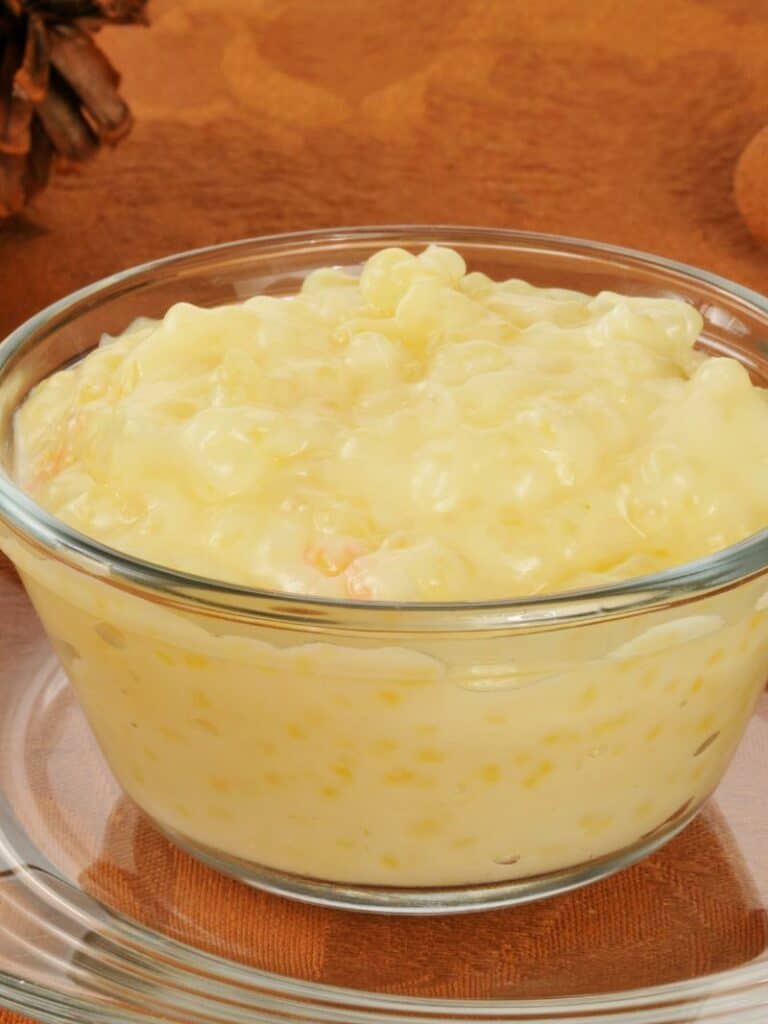
A classic dessert made with tapioca pearls, milk, sugar, and vanilla extract. The tapioca pearls give the pudding a unique texture that’s both chewy and creamy.
Bubble Tea

A popular drink that originated in Taiwan and features tapioca pearls, tea, and milk. The chewy tapioca pearls are a fun addition to the sweet and refreshing drink.
Fruit Pies
Tapioca starch can be used as a thickener for fruit fillings in pies, such as apple or blueberry. It helps create a smooth, thick filling that’s perfect for a slice of warm pie.
Mochi
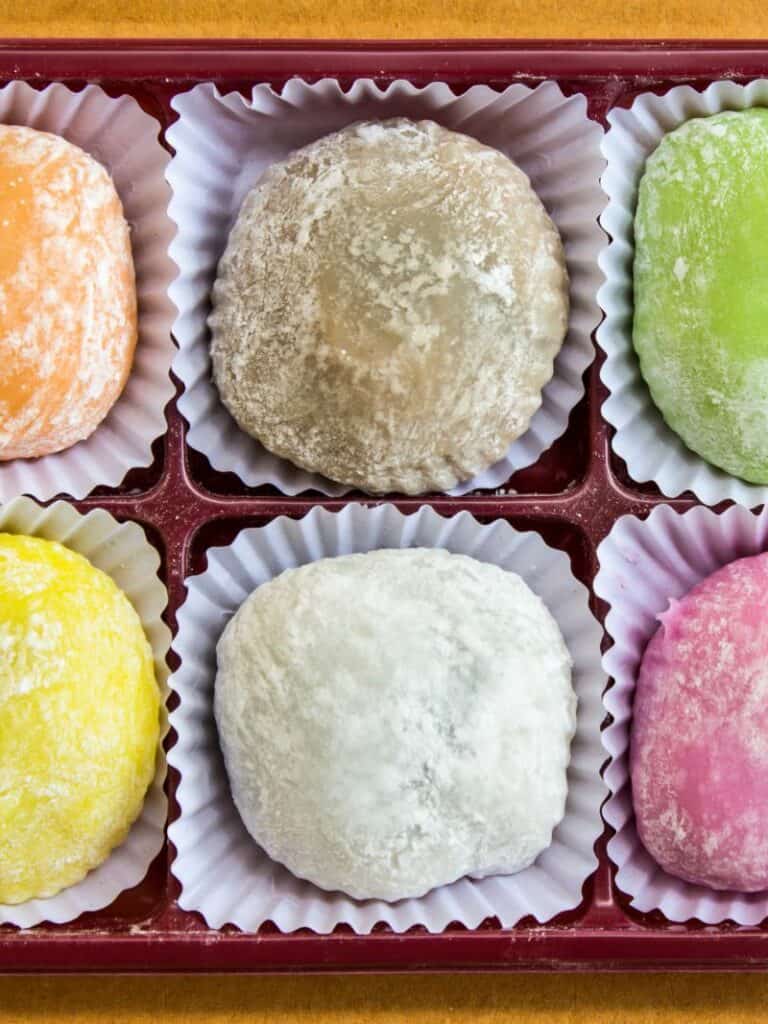
A Japanese dessert made with sweet rice flour and filled with sweet fillings like red bean paste or ice cream. Tapioca starch can be added to the dough to help create a chewy, gummy texture.
Fried Chicken
Tapioca starch can be used as a coating for fried chicken, creating a crispy exterior that’s perfect for dipping in sauce.
Some recommended recipes:
- Korean Fried Chicken – By Christie at Home
- Taiwanese Popcorn Chicken – By Daily Cooking Quest
Veggie Burgers
Tapioca starch can be used as a binder in veggie burgers, helping to hold the ingredients together and creating a firm patty.
Tapioca Flour Crepes
Tapioca flour can be used as a gluten-free alternative to traditional crepes, creating a thin and delicate pancake that’s perfect for filling with sweet or savory ingredients.
Where to buy Tapioca?
Tapioca can be found in most grocery stores and specialty food markets. Look for it in the baking aisle or the gluten-free section. You can also find tapioca starch and tapioca pearls online, through retailers like Amazon, Walmart, or specialty food websites.
If you’re looking for fresh tapioca root, check your local Asian market or health food store. Some farmers’ markets may also carry fresh tapioca root when it’s in season.
With so many options available, it’s easy to find tapioca and start incorporating it into your cooking and baking.
Kate Naturals. USDA Organic Tapioca Flour for Boba, Body Butter, Keto & Vegan. Non-GMO, Gluten Free Tapioca Flour Organic for Cooking
8.8 Oz / 250 G (Pack of 2)
Tapioca Substitutes
If you’re looking for a tapioca substitute, there are several options available depending on the recipe and desired outcome.
Here are some common substitutes for tapioca:
Cornstarch
Cornstarch is a popular alternative to tapioca starch as a thickener in sauces, soups, and gravies. It’s also a good substitute for tapioca starch in gluten-free baking recipes.
Arrowroot Powder
Arrowroot powder is another gluten-free thickener that can be used as a substitute for tapioca starch in recipes.
Potato Starch
Potato starch is a good substitute for tapioca starch in recipes that require a fine texture, such as in baked goods.
Rice Flour
Rice flour can be used as a substitute for tapioca flour in gluten-free baking recipes. It provides a similar texture and can help bind ingredients together.
Agar Agar
Agar agar is a vegan alternative to gelatin and can be used as a thickener in desserts and other recipes that call for tapioca.
Chia Seeds
Chia seeds can be used as a substitute for tapioca pearls in some recipes. When soaked in liquid, chia seeds become gel-like and can provide a similar texture to tapioca pearls.
When substituting tapioca, it’s important to note that the texture and outcome may be slightly different.
It’s best to experiment with different substitutes and adjust the recipe as needed to achieve the desired result.

